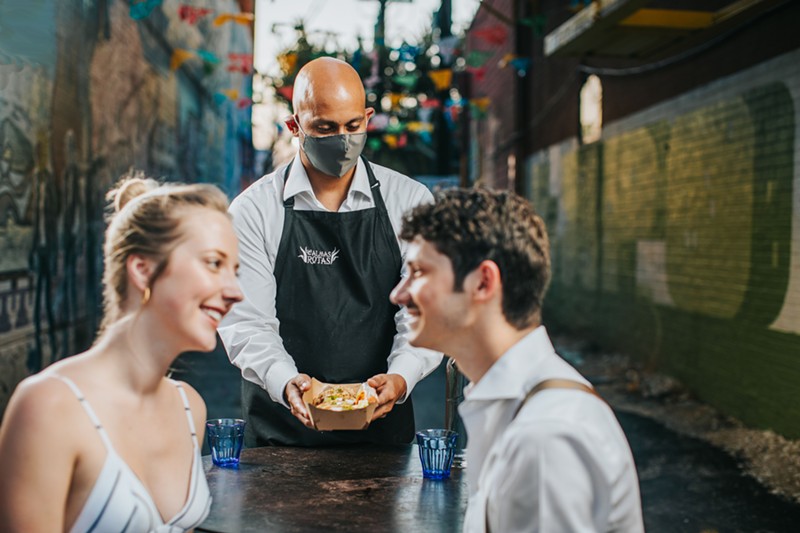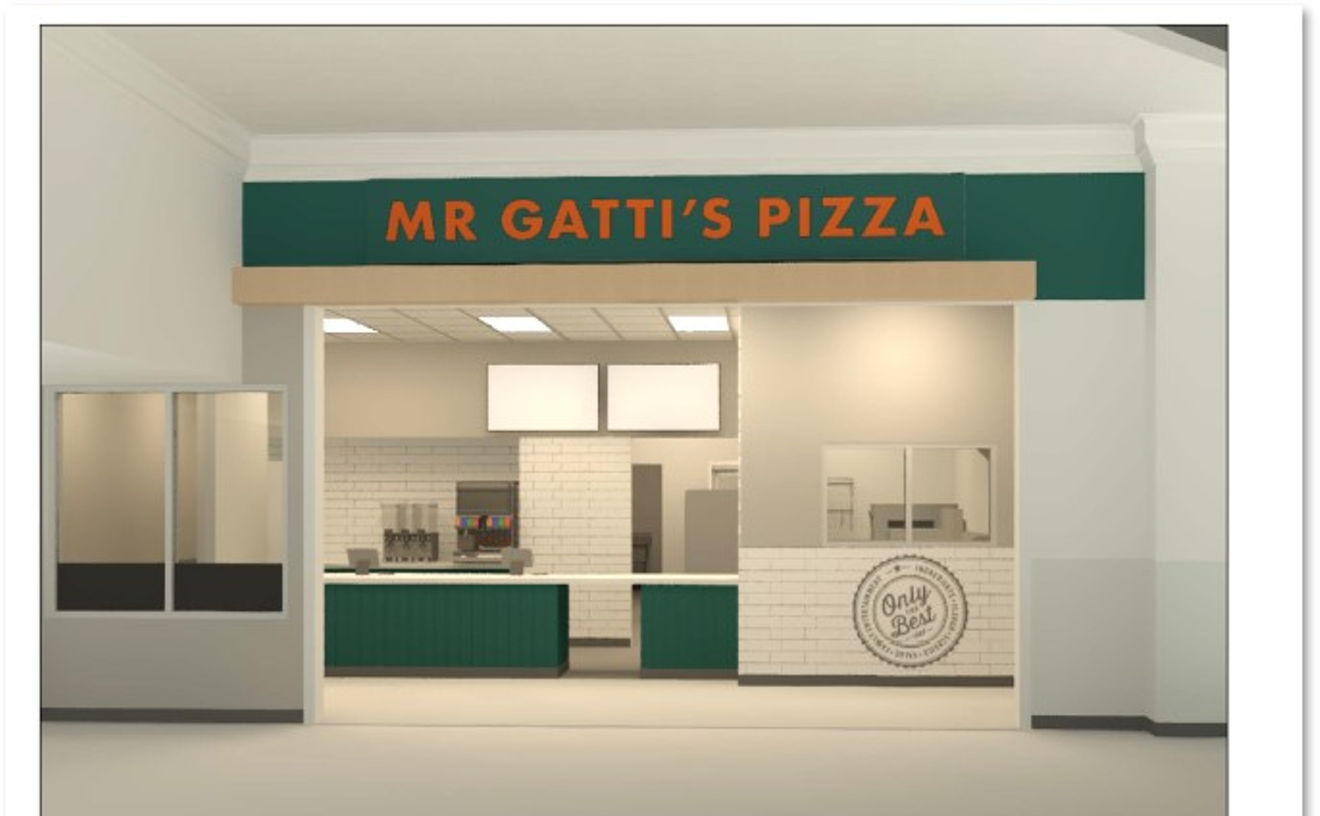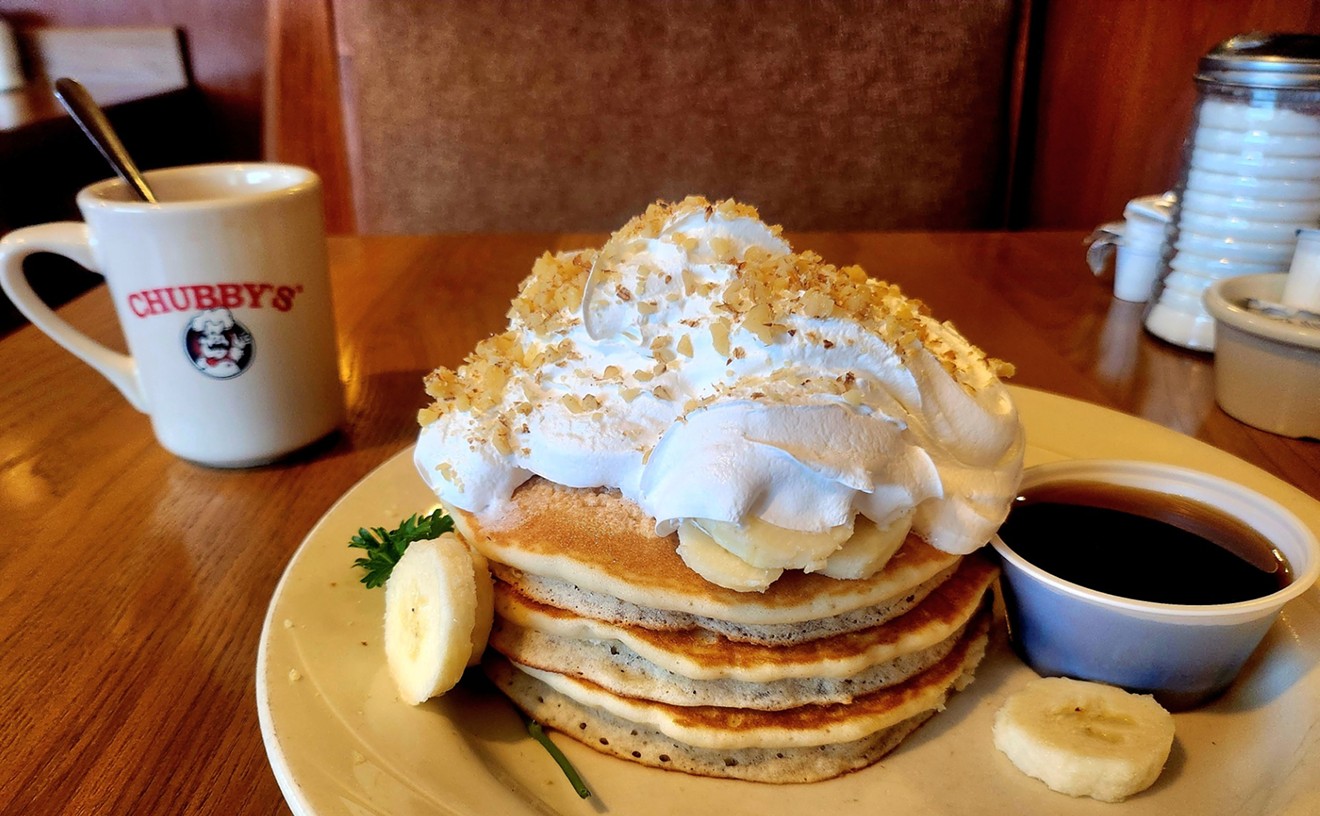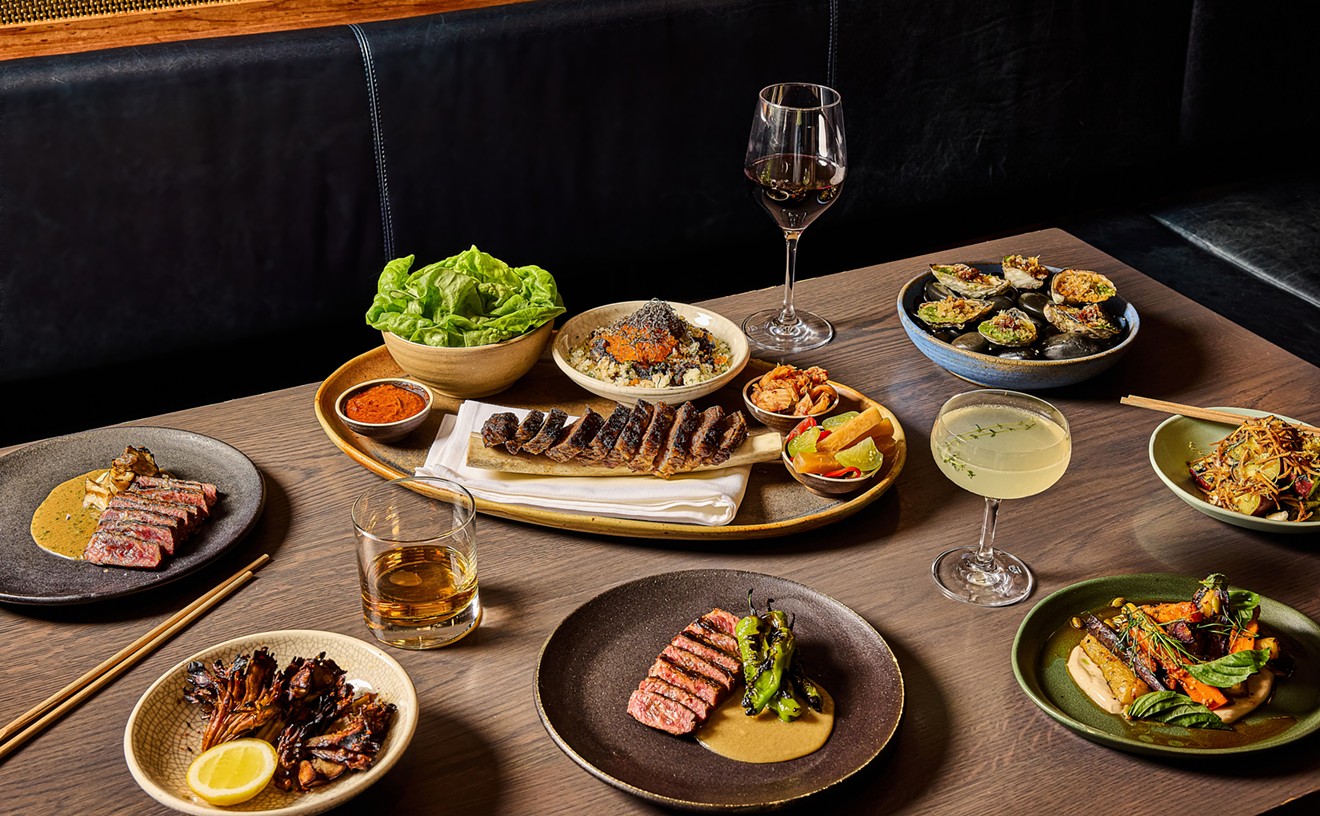In Dallas, restaurants are expanding outdoor space, building structures to make it more comfortable, and creating dining spaces in parking spots. Even in Texas' broiling summer heat, diners hungering to enjoy a meal out would rather face the weather than the coronavirus, so restaurants such as Parigi in Oak Lawn are getting constant requests for the patio seating over indoor dining.
“Some people are like, absolutely only outside,” chef and owner Janice Provost says. “On the weekends we’re pretty much seating every table outside.”
The Centers for Disease Control and Prevention has guiding principles for eating in restaurants: On-site dining limited to outdoor seating with spaced tables holds less risk than dining inside a restaurant. An NPR article last month mentions reasons why that is and why even in summer, diners are opting to brave scorching temperatures:
“First, outdoors is definitely less risky, says [Harvard Medical School physician Abraar] Karan,” according to NPR. “When you're outside, the risk of contracting the virus is lower. That's because coronavirus droplets disperse more quickly into the air. A bonus is that there may be more space between tables than in a small indoor setting.”
That extra margin of safety is luring enough diners that some restaurants are expanding their patios because of the pandemic. Provost reopened the interior of Parigi with seven spaced-out tables and a portion of the restaurant dedicated to a takeout setup because that part of the business is still flowing.
Outside, she extended the patio space with the help of her next-door neighbor, Nuvo, which offered the space in front of its gift store for patios, allowing more tables. More string lights were hung above the area, and as temperatures rose, a new cooling system was put in place.
“It’s basically a fan that circulates water through it, and we put ice cubes in it,” she says. “I’m telling you it oscillates, that thing; it’s like you’re sitting in an outdoor air conditioner. It’s crazy.”
Debating whether she needed six misting fans was not something Provost was doing in the summer of 2019. Now her patio is more than simply a pleasant place that lets diners feel as though they've escaped Dallas's summer heat. It feels significantly safer than dining under air conditioning indoors.
Recently on Facebook, I asked readers, "Are you opting for patios, or are you feeling comfortable inside?" Out of more than 50 Dallas residents who responded, some say they’re comfortable dining inside restaurants, but many are sticking outdoors if they’re going to restaurants at all.
- “Outside only,” said East Dallas resident Erin Johnston. “It’s so much safer based on everything we know as of right now. And we are still doing more takeout/at home.”
- “I am eating out all over the place! Masks and precautions of course, but I am definitely partaking inside or out!” Traci Mitchell wrote.
- “Restaurants are so empty inside so there is plenty of space,” chimed in Jay Jerrier, owner of Cane Rosso.
- “No way inside,” Jeff Strater said. “Outdoor if it’s not crowded and ample spacing exists.”
- "I am working in a restaurant, we are mask mandated, hand washing between every touched plate/utensil and we are covering every possible precaution but I would [choose] patio if I were eating out. Which I haven’t done in months," another person wrote.
“We’ve added a 'ToGo InPlace' feature. ToGo InPlace is the adaptation of the sidewalk in front of the restaurant and the adjacent business, with their approval, of course, into a socially distant patio dining area where guests can enjoy their to-go items in place,” co-owner Taylor Samuels says.
You can still order your food and margaritas via the website; the restaurant provides glassware, cold water and ice for cocktails, and your order is brought to your table.
About a dozen tables make up this space — two- and four-tops with a maximum capacity of six.
“The service is gaining in popularity, and I’ve not seen anyone else doing service like this,” Samuels says.
The larger area is also spruced up a bit compared with pre-COVID times. Custom planters were just installed, and the large, rectangular-shaped vessels hold plants vibrant enough to soften the space and tall enough to divide the sidewalk, a welcome addition for diners and passersby, pandemic or not.
For now, this is the way to eat at Almas.
“We still didn’t feel it was safe to open up the dining room,” co-owner Shad Kvetko says. “We’re exploring some options; we may do some tickets, coursed meals. … We’re just trying to stay alive, trying to ride this thing out, this way and that way.”
Across town at José in North Dallas, new greenery has filled not only the beautiful patio the restaurant opened with but the extended patio, as well, which has a shiny new covering. This is beyond a temporary measure; it matches the retractable roof on the upper, original patio.
“It [screens the sun] to help make it a little more attractive, more approachable,” general manager Victor Rojas says. “We invested quite a bit in greenery, as well, to make it more aesthetically pleasing.”
It is a nice place to be. The top patio has fans, and the second one doesn’t yet, but it still allows about 93 people to sit out there. If we weren’t in a pandemic, 110 people could be sitting outside of José drinking margaritas. Some would be inside, but fewer people want that now.
Before restaurants in Dallas had to close in March — before it was hot — when guests at José requested a patio table, they’d usually get it.
“In the past we were able to really accommodate those requests,” Rojas says. “People are just really strict about, ‘I have to have the patio,’ and they would wait 30 minutes or 45 minutes or whatever it happened to be, but now with social distancing in place … we can’t be as accommodating.”
So people wait in their cars or at the bar, if there’s room. The previous space where people could wait is now occupied for takeout prep.
In other states, restaurants have more options for outdoor seating thanks to accommodating city leaders.
Philadelphia closed its Second Street to cars last month, making room for outdoor dining. Neighbors had to fight for it, according to Eater Philadelphia, and the weekend-long closure allowed restaurants to welcome more people for al-fresco dining.
“Temporary street closures are one of the options the city of Philadelphia offers to restaurants looking to expand outdoor dining while indoor dining is prohibited during the coronavirus pandemic (indoor dining is not currently allowed within Philly ... it is permitted in the rest of Pennsylvania, but limited to 25 percent capacity). The street closures are intended for multiple restaurants to make use of at the same time,” Eater reported.
Some Dallas residents have been hollering to local leaders to close streets to allow pedestrians to use the space for recreation during shelter-in-place, but in Dallas we don’t have closed streets for dining, though a promising spot for it comes to mind — Bishop Street in North Oak Cliff.“It’s been a game-changer." — Amy Cowan about the parklet outside Reverlers Hall
tweet this
Instead, what is going on there is something allowed by the city since the pandemic began: “parklets,” basically an extension of the sidewalk or patio into a parking space. Dallas’ temporary parklet permit program began over the summer after the city had more or less of a guinea pig through a parklet in front of Revelers Hall in May.
Revelers co-owner Amy Cowan explained that Better Block, a nonprofit based in North Oak Cliff that works to create spaces in communities that bring people together, has tested parklets in other cities. Fortunately, her business partner Jason Roberts is the founder of Better Block, and trying it out in front of their spot on Bishop Avenue was doable. So, working closely with City Council member Chad West, they delivered Dallas its first parklet.
“It gave them a chance to see one live and built so they would have a tactile example,” Cowan says. “It’s been a game-changer; even in incredible temperatures, it’s the first thing to fill up.”
Today, Bishop Avenue feels alive — not dense, but the energy that was there before the pandemic has somewhat returned. Parklets such as the one in front of Eno’s Pizza Tavern, just across the street from Revelers, helps.
“The parklet pilot project is helping small businesses and restaurants to hopefully keep people employed while also keeping their customers safe,” West says. “While it is not what any of us imagined this year would look like, ironically, COVID is giving us the chance to try some creative things we might not have been brave enough or innovative enough to try before.”
There are a few hoops to jump through — at least compared to, say, Houston. The Houston City Council approved its “More Space” pilot program Aug. 5. There, restaurants can seat diners in up to 50% of their private parking lots.
“Restaurants can start serving in the parking lot immediately after notifying the city,” the Houston Chronicle reports. (The Houston City Council is also considering a proposal to close off a portion of its Main Street to provide space for outdoor dining.)
In Dallas, restaurants that want to host a temporary parklet must complete an online application at least three days before setting the parklet up. Restaurants complete a site plan and a parklet property authorization form. The application is sent to applicable city departments for review. Permits are issued for 10 days at a time with renewals for a maximum of 60 days.
So far, the city of Dallas has received 14 applications.
“We’ve received requests from businesses throughout the city, but the majority have come from the city’s most popular entertainment districts, including downtown/Deep Ellum, Uptown and Bishop Arts,” says Rosa Fleming, director of the city of Dallas Convention and Event Services.
"We are looking at an expansion of the parklet program here in Dallas to offer match funding or possibly even fully funded parklets for businesses that qualify," West says, noting those qualifications aren't yet set. "… And using COVID funds to support the businesses in these endeavors."
For now, restaurants must pay a $50 base fee plus $150 if they sell alcohol — this even as restaurants teeter on the brink amid an economic meltdown. "Please note that other City department permit fees may apply related to parking meter hooding, fire prevention permits, temporary food permits and/or Sustainable Development and Construction Department permits. TABC permit fees may apply," the city's website for the program points out.
New York City is also doing more outdoor dining with relaxed regulations, and if indoor dining continues to be a no-go, the city will keep it going for the colder months.
Assuming the pandemic remains strong, Provost may have to swap that outdoor air conditioning unit for a heater. Either way, like seemingly every other restaurant, she’ll make it work with what she has.
“We strung lights that are the cafe lights from all the way down, so it really does feel like a little Parisian cafe,” she says. “It’s a little happy, even if we can’t go to Paris right now.”













